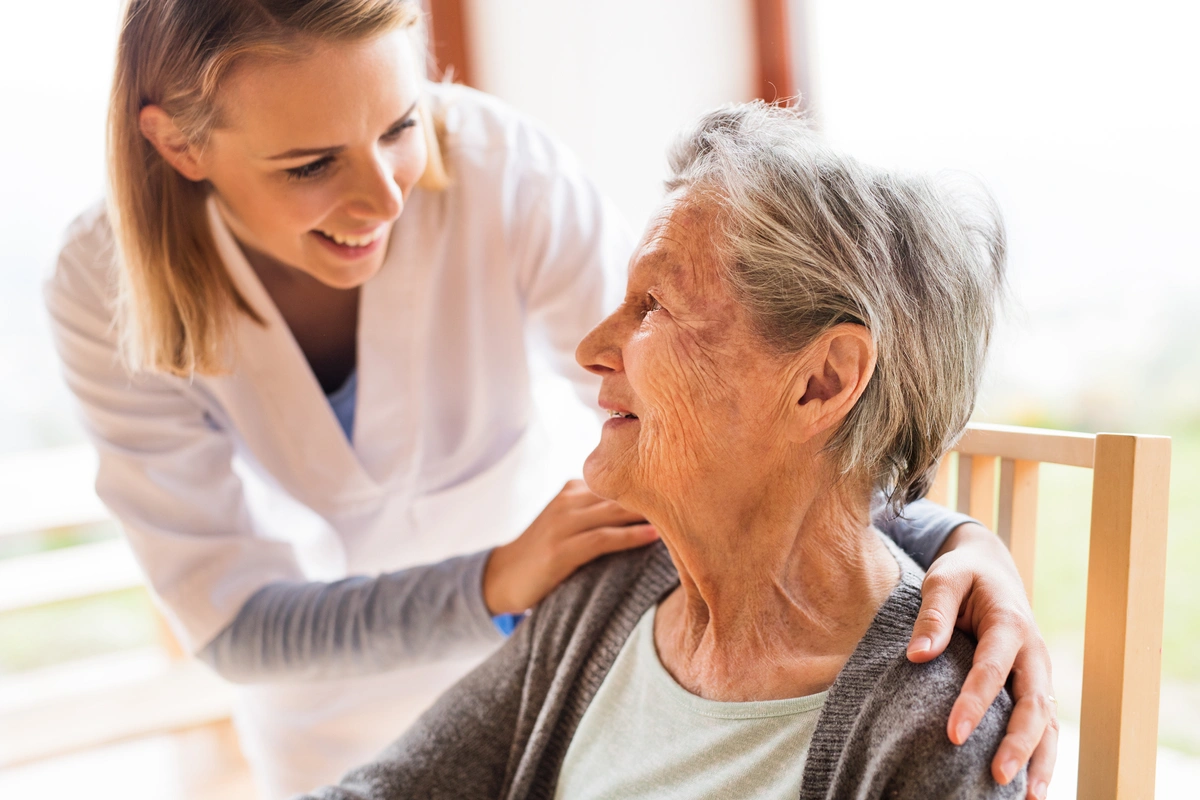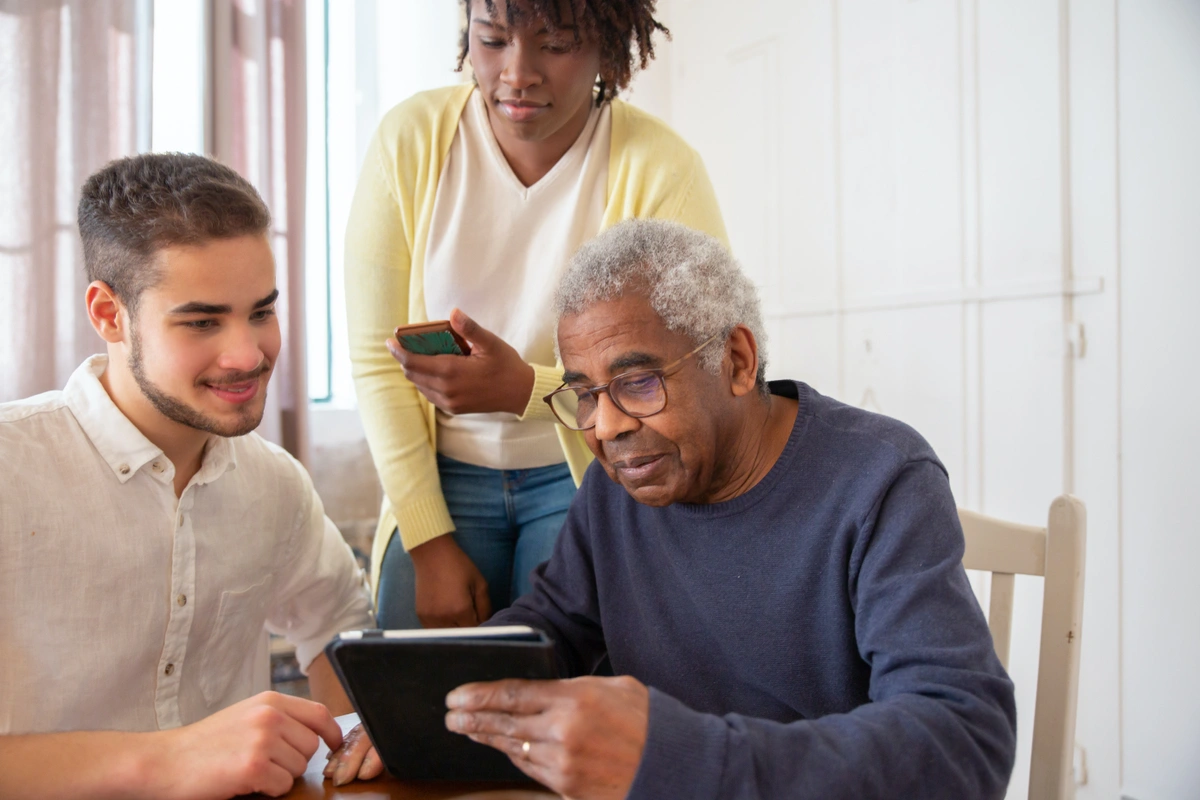
The COVID-19 pandemic has taken a profound toll on older adults, isolating them physically and emotionally from their communities and families. Mental health has suffered across generations and, as a practicing geriatric psychiatrist, I have had a front-row seat to the unique conditions older adult populations are facing. Despite rising rates of depression and anxiety, infection control measures have accelerated the adoption of digital health, including telehealth, opening myriad new channels for health care delivery.
With respect to some of the most severe mental suffering, older adults are disproportionately affected, accounting for 18 percent of all deaths by suicide, despite making up 12 percent of the US population. Social isolation, loneliness, and internalized ageism—all of which have spiked during the pandemic—are known risk factors for suicide, and I will describe them in a little more detail.
Social isolation, loneliness, and internalized ageism
People often use the terms loneliness and social isolation interchangeably, though they carry distinct meanings. Social isolation refers to the relative absence of social contacts and is not in itself upsetting to the individual. On the other hand, loneliness is the subjective and painful experience of disconnection from others. Though not a formal diagnosis, we often consider loneliness as an important clinical entity and one that carries risks to physical and mental health. Importantly, just because an individual is socially isolated – for example, lives alone, has a small community, or interacts with few people – does not mean they experience loneliness. Conversely, even an individual continually surrounded by others may feel lonely.
Internalized ageism is also nuanced in its definition. When older adults feel they no longer bring value to society, it can impact their deepest sense of self-worth. This may be exacerbated by physical or mental disability that limits previous activities and independence. Internalized ageism is certainly deepened by subtle and common messaging that older and disabled persons are less valuable to society when they are more dependent on others or experience impairment in functioning. As one can imagine, public discussions and media coverage about rationing care, policies protecting individual freedoms over vulnerable populations, and the over-promise of telehealth despite less access among older adults add to these widespread stereotypes about worth to society decreasing as we age.
Sometimes the simplest interventions can be the most effective. Low-tech solutions like videoconferencing can help clinicians provide an extra touchpoint with their patients and extend their care beyond the walls of the clinical institution. Bolstering social connections for patients can also address internalized ageism.
Family videoconferencing: a genuine breakthrough
In my recent report, “Videoconferenced Family Therapy for Suicidal Older Adults: A Case Report and Post-Pandemic Opportunity,” my co-authors and I outlined a case of one of my patients, a man in his late 70s, who was in a cycle of suicide attempts, hospitalizations, and outpatient treatment during the pandemic. We tried multiple medications and therapies, but he remained depressed and demoralized. We identified two core dynamics that fueled his perception of worthlessness and, therefore, his suicide risk. The first was forced retirement, which altered his view of his value to society, and the second was his gradual social isolation arising from chronic pain and decreased mobility.
We decided to include his family even more intensively in his care, a simple idea made difficult by the hospital’s Covid-19 visitor restrictions. We held an extended therapy session over video conference with the patient, his wife, and his adult children over several time zones and continents. Laughter, tears, and vulnerability flowed in all directions as each person could see and hear the others. In this facilitated virtual space, a delicate balance of closeness and separation promoted authenticity and healing for all involved.
This experience could be described as a genuine breakthrough, which marked the beginning of a profound reparation between the patient and his family, helping him to feel seen, understood, and supported in new ways and offering a safe space for his family to express their own feelings and hopes. Over a year after that meeting, he has not re-attempted suicide. His depression is largely in remission; he has resumed hobbies and rekindled friendships; and he has even met his first grandchild. When he and I had a recent opportunity to reflect on his recovery, he recalled the videoconferenced family meeting as having had the greatest impact among all the therapies tried.
Incorporating simple — but powerful — technology in future practice.
Before the COVID-19 pandemic and the surge of virtual care it created, this kind of intervention was practically unheard of. Family members, especially those who did not live close by, were not easily incorporated into care plans. Simple technology has made their involvement not only possible, but easy. Health care has been behind the technology curve in many ways, and the shutdowns of 2020 and 2021 helped propel us forward. When we hear “technology” in health care, we often conjure up flashy, sophisticated, and high-cost solutions, but even the most basic technology was transformative in my patient’s treatment. Today this form of virtual family therapy has become standard in my practice. I am excited to see simple and powerful approaches like these expand for more individuals in institutional care, giving patients access to community and support beyond the hospital walls.
We are often less inclined to think about technology solutions when it comes to older adults, even in clinical settings, but as providers, we must not underestimate the power of family and community in our treatment. Technology can make that easier.
Alexis Freedberg is a psychiatrist.

